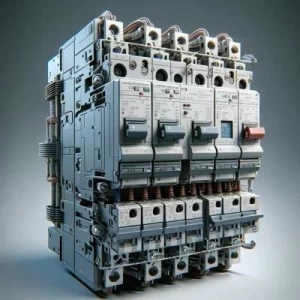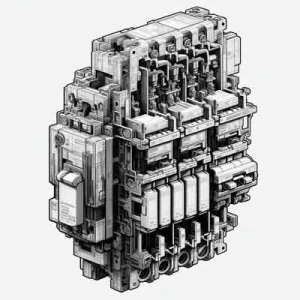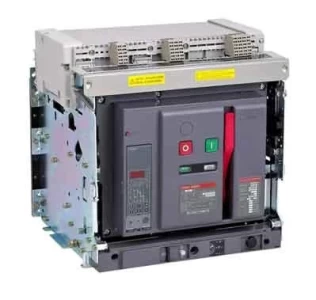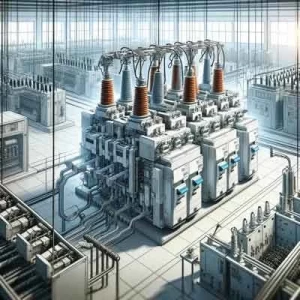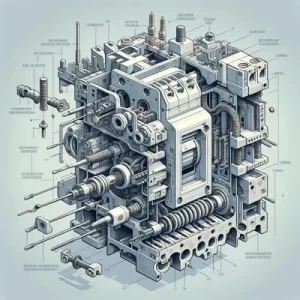Types of Air Circuit Breakers
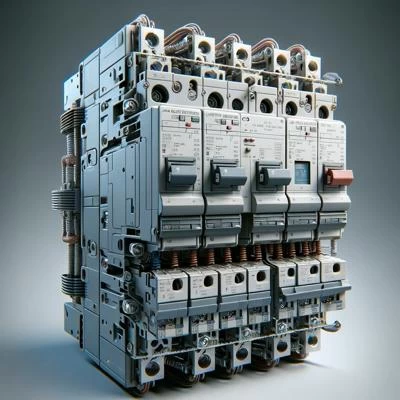
Air Circuit Breakers (ACBs) are crucial components in the electrical distribution network, designed to provide overcurrent and short circuit protection. Their primary function is to interrupt current flow to prevent damage to the system when a fault is detected. ACBs operate in the air as the arc extinguishing medium, distinguishing them from other types of circuit breakers that use different mediums, such as oil or gas. This article delves into the various types of ACBs, highlighting their design, operational characteristics, advantages, and disadvantages.
Plain Air Circuit Breaker or Cross-Blast Air Circuit Breaker
The Plain Air Circuit Breaker, also known as the Cross-Blast Air Circuit Breaker, features an arc chute design for extinguishing electrical arcs. The arc chute is segmented into small compartments by metallic separation plates. This compartmentalization helps in effectively cooling and splitting the arc, leading to its quick extinction. The design ensures that the arc is forced into these compartments, where the increased surface area aids in dissipating the heat and quenching the arc more efficiently. This type of ACB is favored for its simplicity and effectiveness in low to medium voltage applications.
Air Chute Air Break Circuit Breaker
The Air Chute Air Break Circuit Breaker incorporates both main and auxiliary contacts. The auxiliary contacts are specially designed to protect the main contacts from the damaging effects of arcing. They are made from materials that can withstand the high temperatures generated by the arc, and because of their design, they can be easily replaced if wear or damage occurs. This design enhances the durability and reliability of the breaker, making it suitable for applications where maintenance access may be limited.
Magnetic Blowout Type Air Break Circuit Breaker
Magnetic Blowout Type Air Break Circuit Breakers utilize blowout coils that are connected in series with the circuit being interrupted. When an arc forms, the current flowing through the blowout coils generates a magnetic field. This magnetic field exerts a force on the arc, driving it into the arc chute where it can be extinguished. The main advantage of this type of ACB is its ability to control and extinguish high-intensity arcs, making it suitable for medium voltage applications where rapid arc quenching is essential.
Air Blast Circuit Breaker
Air Blast Circuit Breakers are designed for high-voltage applications and are known for their rapid operation. They utilize a high-pressure air blast as the arc extinguishing medium. This category is further divided into axial blast breakers and axial blast breakers with sliding moving contact. The axial blast design directs a stream of air along the axis of the arc, cooling and dissipating it quickly, while the sliding moving contact design uses the movement of the contacts in conjunction with the air blast to extend and extinguish the arc. These breakers are characterized by their fast operation and are commonly used in high voltage systems where the swift interruption of current is critical.
Advantages and Disadvantages
Each type of ACB offers distinct advantages and disadvantages, making them suitable for specific applications. The Plain Air and Air Chute types are appreciated for their straightforward design and ease of maintenance, making them ideal for low to medium voltage applications. However, they may not be as effective in high-voltage settings where more robust arc quenching methods are required.
Magnetic Blowout ACBs provide excellent arc control, suitable for environments where precise arc extinguishing is necessary. However, their complexity can increase maintenance requirements and costs.
Air Blast Circuit Breakers offer rapid operation and are effective in high-voltage applications but can be more expensive due to the need for compressed air systems and their maintenance.
The choice of an Air Circuit Breaker depends on several factors, including the voltage level of the application, the frequency of operation, maintenance capabilities, and cost considerations. Understanding the operational characteristics and advantages of each type of ACB is essential for selecting the most appropriate breaker for a given application, ensuring the safety and reliability of the electrical distribution system.

